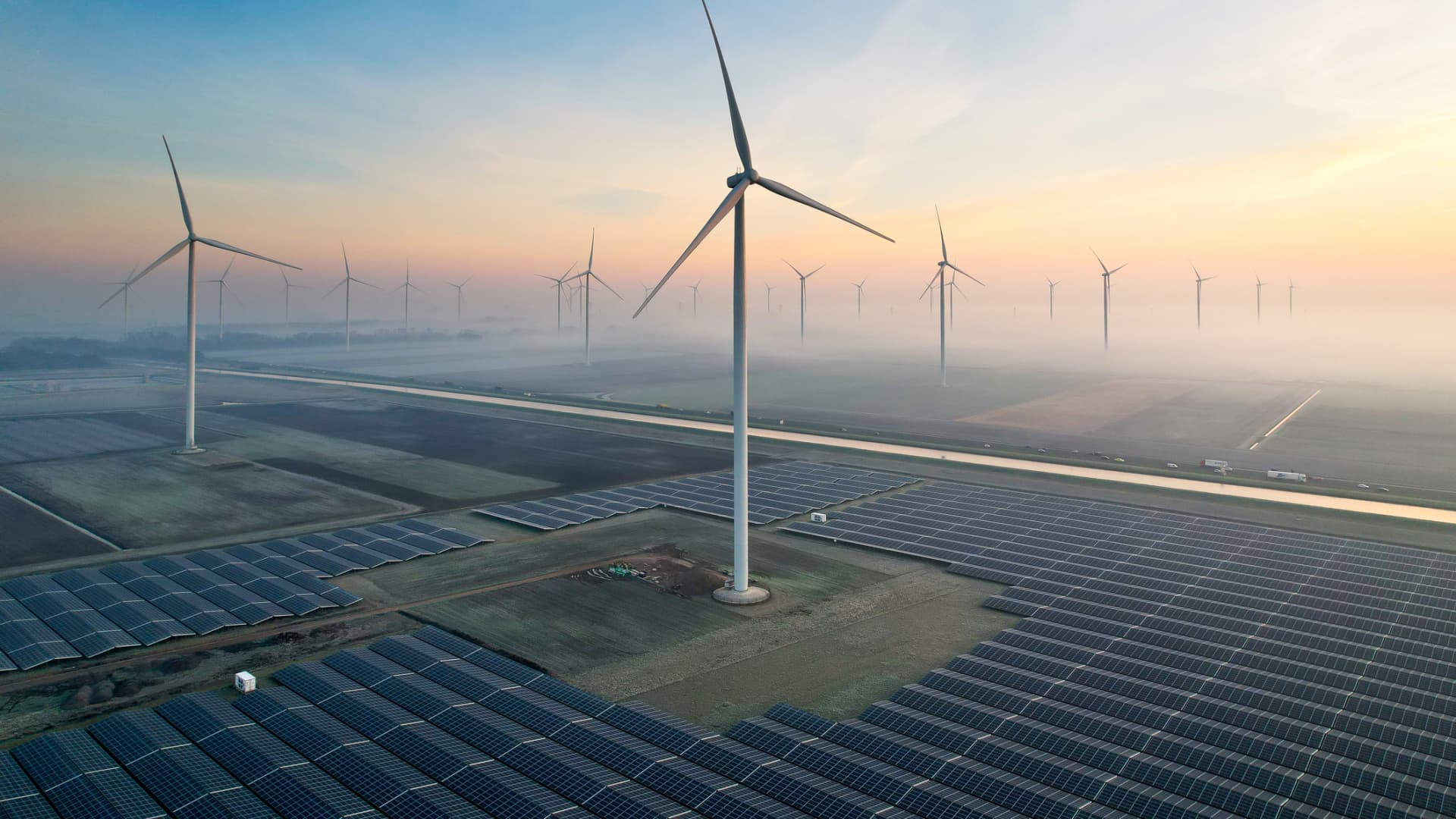Solar panels and wind turbines in the Netherlands.
Daniel Bosma | Moment | Getty Images
Clean energy stocks may be underperforming in the public market. But there is still a great appetite for companies focused on decarbonization in private markets, with Clean Energy Ventures’ new fund as the latest example.
The climate tech firm said Wednesday that it raised $305 million for its second fund, five years after closing its first. This latest fund was oversubscribed — the initial target stood at $200 million — but interest from limited partners, including The Grantham Foundation, Builders Vision and Carbon Equity, led to a higher raise.
The firm is already putting the new money to work, focusing on technologies that go beyond the traditional green investments of solar and wind.
Daniel Goodman, co-founder and managing partner, identified industrial decarbonization as one compelling vertical — specifically emissions-reducing technology for the cement and steel industries.
“When you think about where do we need to have material impact, and where are sectors that technology really hasn’t changed for many, many decades, steel and cement rank at the top of the list. So we think there’s huge opportunity there,” he told CNBC.
Two other areas of interest for the new fund include plastics — both more efficient recycling as well as cost-competitive bioplastic production — and grid-improving technologies for distributed energy, such as virtual power plants.

Clean Energy Ventures backed 20 companies in its first fund and has already made six investments via its second fund, including Israel-based green ammonia company Nitrofix, as well as sustainable aviation fuel company Oxccu, which is based in the U.K. Clean Energy Ventures is also opening a new office in London, with Goldman calling the European opportunity “really incredible,” while also pointing to opportunities in Israel.
A lot has changed in the renewable energy landscape since 2019 when Clean Energy Ventures launched its first fund, including the rise — and subsequent fall — of special purpose acquisition companies. During the Covid era, SPACs proved a popular path for clean energy companies to access public markets. Many have performed poorly since, leading some to argue that the enthusiasm around SPACs caused companies to go public when they weren’t ready.
But Goldman said the unwind of the SPAC trade and poor performance of publicly traded clean energy stocks haven’t damaged investor perception around the value of clean energy investing or the idea that greener investing comes at the expense of returns. Clean Energy Ventures’ limited partners, which include institutional investors, asset managers, family offices and registered financial advisors, are not impact investors — in other words, they’re focused on returns.
None of the companies from Clean Energy Ventures’ first fund have gone public, but the firm views IPOs as a nice-to-have, rather than a need-to-have. Goldman said Clean Energy Ventures’ approach has been to instead focus on strategic sales — backing companies developing technologies that a much larger company, say an energy or industrial giant, might be interested in.
No companies from the first fund have been acquired, although Goldman said there have been interested buyers.

Elsewhere in private markets, private equity is playing an increasingly important role in energy-transition related deals. According to Mike Collier at financial advisory firm Weaver, private equity-backed energy transition deals jumped to more than $25.9 billion in 2023, up from just $500 million in 2018.
Private equity plays a critical part because it can be a stepping stone for companies that have outgrown venture capital, but aren’t yet ready for public markets.
Clean Energy Ventures helps its portfolio companies reach the next stage by partnering with private equity, and Goldman said over the last six months the firm’s seen more interest from that market.
“I’m not saying they [private equity] are coming in and taking early stage technology risk, but once you have a demonstration – or first of a kind – they’re able to get comfortable with coming in for those follow-on projects, much sooner than was traditionally the case,” he said.







